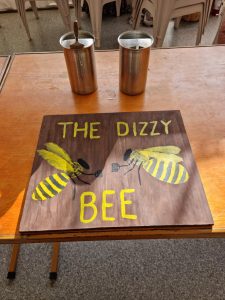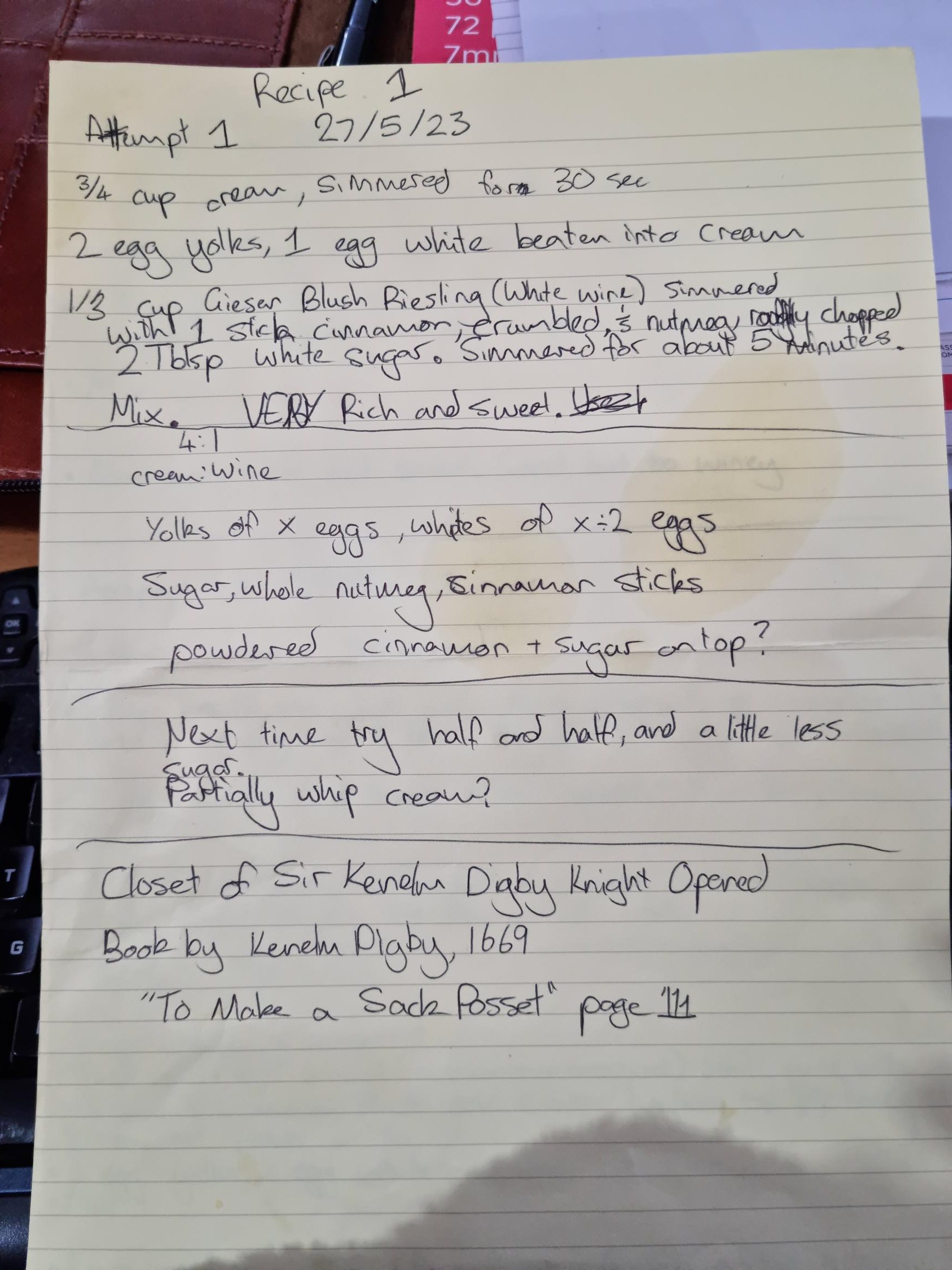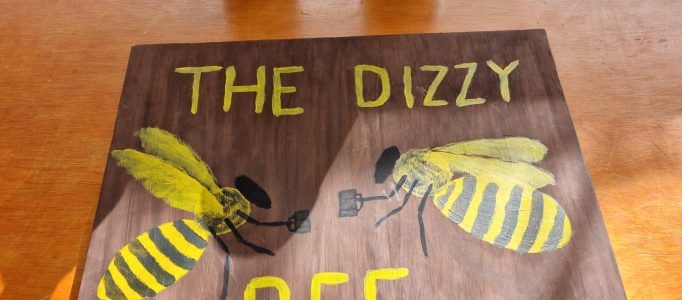EEEEC: Ailith Ward’s Posset
Ailith presents this entry of an evolution of possets in the category of Degustation

“As some people are aware, I ran a tea tent some afternoons at Canterbury Faire 2023. This led me to put a bit more research into what people further to the west of Europe and in Britain drank to warm themselves of an evening. What I found was Possets. Used as a warm drink, a dessert, and the base for many other recipes, I kept running into the issue of recipe books that would simply say “start with a posset”. But how did I start with a posset when it was too well known for them to even write the recipe down? Limited to Google books and the Gutenburg Project (and similar websites) I eventually found The Closet of Sir Kenelm Digby Knight Opened by Kenelm Digby, published 1669. The book had been written in the 4 or so decades before, and had been published by the author’s son. I reasoned that as a philosopher and not a cook, Sir Digby had almost definitely written down older recipes rather than creating his own versions, and therefore it is extremely likely that his posset recipes are, in fact, period. So, under the sign of the Dizzy Bee, I used his “To Make a Sack Posset” (from page 111) as a base to start trialling possible recipes.
” And so we come to this. What actually is a posset? Well, a posset is a drink that sometimes had solid curds on top of it that could be eaten. It is make from milk or cream, eggs, a white wine or ale, sugar, and varied spices. There were as many different variations as their were cooks. The best description I have been able to come up with is that it is a drinkable custard mixed with a mulled white wine or ale. For those who can read scrawl, I have included my notes from the first few times I tried it, until I came to something simple that I felt was right for me. The notes were written specifically for myself and sometimes reference cooking utensils I have at home, so if something doesn’t make sense, that’s why…”
I presented my final experiment with this particular posset recipe at the A&S showcase at Yule 2023. Many people tried it, and some even came back for seconds :)”
The original recipe:
TO MAKE A SACK POSSET
Boil two wine-quarts of Sweet-cream in a Possnet; when it hath boiled a little, take it from the fire, and beat the yolks of nine or ten fresh Eggs, and the whites of four with it, beginning with two or three spoonfuls, and adding more till all be incorporated; then set it over the fire, to recover a good degree of heat, but not so much as to boil; and always stir it one way, least you break the consistence. In the mean time, let half a pint of Sack or White muscadin boil a very little in a bason, upon a Chafing-dish of Coals, with three quarters of a pound of Sugar, and three or four quartered Nutmegs, and as many pretty big pieces of sticks of Cinnamon. When this is well scummed, and still very hot, take it from the fire, and immediately pour into it the cream, beginning to pour neer it, but raising by degrees your hand so that it may fall down from a good height; and without anymore to be done, it will then be fit to eat. It is very good kept cold as well as eaten hot. It doth very well with it, to put into the Sack (immediately before you put in the cream) some Ambergreece, or Ambered-sugar, or Pastils. When it is made, you may put powder of Cinnamon and Sugar upon it, if you like it.
Digby, K. (1669). The Closet of Sir Kenelm Digby Knight Opened (p. 111).
Recipe I settled upon:
For 1 cup of cream, use:
- half a cup of white(ish) wine
- 2 egg yolks
- 1 egg white
- 1/2 a stick of cinnamon crumbled
- 1/4 of a whole nutmeg roughly chopped
- 1 tablespoon honey or sugar
Mix wine, spices, and sugar into a small pot and put on to heat over a medium heat.
In a medium pot simmer the cream for a few minutes, do not allow it to boil. remove the cream from the heat and beat in the egg yolks and white.
Strain the hot spiced wine and mix into the cream, pouring from a height for aeration purposes.


“I am presenting this as a “completed” A&S project, but as any good cook will know, a project like this will never be entirely completed. Since testing this recipe I have since found actual period sources, plus I want to try it with different types of wine and especially mead. Possibilities are endless with a recipe as open as this.”


